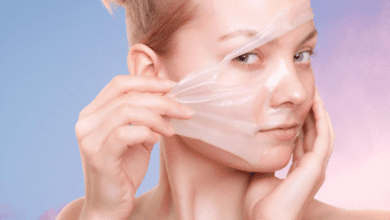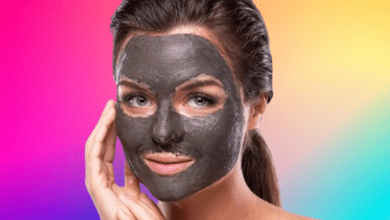How Do You Get Glowing Skin? (Here are 14 tips.)

Having glowing skin is more than just using the right products. Taking better care of your skin from the inside out is far more crucial. We occasionally forget to take proper care of our skin, and the consequences appear quickly.
Try the best advice in the list below if your skin appears lifeless and needs some TLC. You’ll quickly notice a glow to your skin when you incorporate a few different natural options into your skincare routine.
01: Drink enough water
Your skin will not appear hydrated and radiant no matter what skincare products you use if you don’t drink enough water.
According to the Institute of Medicine (IOM), men should aim for 13 cups of water per day and women should aim for nine. Keep in mind that this amount also includes the water in your food.
02: Include a Facial Oil in Your Daily Routine
Achieving a healthy glow and hydrating your skin can be achieved by selecting a natural face oil.
One common choice is coconut oil, which has been demonstrated to enhance skin hydration. Argan oil, jojoba oil, rosehip oil, or even your extra-virgin olive oil in the kitchen are other options.
03: Put on sunscreen.
Preserving the radiance of your skin requires protecting it from UVA and UVB rays.
Pick a mineral-based sunscreen over a chemical-based one to protect your skin from more toxins while still providing high-quality protection. Plus, mineral-based sunscreens are more eco-friendly.
Reapply frequently if you plan to spend a lot of time in the sun.
04: Take Showers That Are Cooler
Although taking a cold shower may not seem like the most pleasant idea, there are many advantages for your skin.
Your skin appears healthier as a result of improved blood circulation brought on by cold water. It also aids in momentarily tightening your pores.
If the sound of a cold shower bothers you, you can still get the same effect by simply sprinkling cold water on your face.
05: Recognize Your Skin
Consider focusing your routine on specific areas of your face rather than using the same products everywhere.
You might want to use a moisturizing homemade oatmeal mask on the rest of your face and a mattifying clay mask over your oily T-zone.
06: Apply a Toning Face Mask
If you don’t currently use a toner in your skincare regimen, think about doing so. Toners can help hydrate your skin and get it ready for a serum or moisturizer. This enables your products to absorb into your skin more deeply, improving the results you get.
You can use natural ingredients like cucumber and lemon juice, aloe vera, or rose water, depending on your skin type.
07: Put on a face mask.
Face masks are little powerhouses that remove dead skin cells and add a burst of hydrating moisture.
Although there are many options available in stores, you can also create a DIY version that is tailored to your skin type. Pick from a variety of delicious natural ingredients, such as yogurt, avocado, bananas, and turmeric, to help relieve dry skin, unclog pores, and much more.
08: Give Your Face a Massage
A brief massage of your face can help improve skin radiance by increasing blood flow to the area. You can do this and apply your moisturizer or serum at the same time.
All you have to do is massage your face in tiny, upward circles with your fingers. A facial roller is an additional option. Additionally, both techniques promote lymphatic drainage, which aids in the body’s detoxification.
09: Enhance Your Beauty Routine with Vitamin C
Owing to its capacity to increase the production of collagen and moisturize the skin, vitamin C is a popular ingredient in many face creams. Including a vitamin C-containing face cream or serum is a fantastic way to make your skin look younger.
10: Remember to exfoliate.
Dead skin cells are removed from the skin through exfoliation, revealing healthy, radiant skin. You can use a mild physical exfoliant that removes dirt and dead skin cells, or you can use an exfoliant with acids that gently break down dirt and dead skin cells.
There are many natural exfoliants you can use in place of store-bought exfoliants, such as papaya and honey, which frequently contain plastic microbeads that are bad for the environment. Usually, exfoliating once or twice a week suffices.
11: Clean Your Brushes for Makeup
If you wear makeup, keeping your skin healthy can be achieved by routinely cleaning the brushes you use. Not only can unclean brushes trap dirt in your pores, but they can also harbor bacteria.
Put a tiny bit of gentle shampoo onto each brush and then fill it with warm water. Use a circular motion to massage the palm of your hand with the brush. Keep the brush handle dry as moisture can contaminate the glue. After thorough rinsing, place each brush on a towel to dry.
12: Two-Step Cleansing
For the most part, we just wash our faces once before using toner and other products. Using a double cleanse in the evenings can be very beneficial for skin that is overly made up or lives in an area with high pollution levels.
In order to be sure you’ve eliminated all traces of pollution, makeup, and grime that your skin may have picked up throughout the day, double cleanse with a natural cleanser.
13: Consume Well
Eating a variety of nutrient-rich superfoods, such as berries, dark leafy greens, legumes, and nuts, can help you achieve glowing skin. Eat more fruits, sweet potatoes, and other foods high in this vital antioxidant to increase your intake of vitamin C.
You’ll start to notice improvements in your skin if you make sure to nourish your body with nutritious foods.
14: Ensure constant moisture levels.
After maintaining a nutritious diet and getting enough rest, you can focus on nourishing your skin from the outside in.
Regardless of your skincare regimen, applying a moisturizer will make your skin appear more hydrated and dewy. To ensure that your natural moisturizer is beneficial for both the environment and your skin, look for one that has received a high ranking from the Environmental Working Group (EWG).




